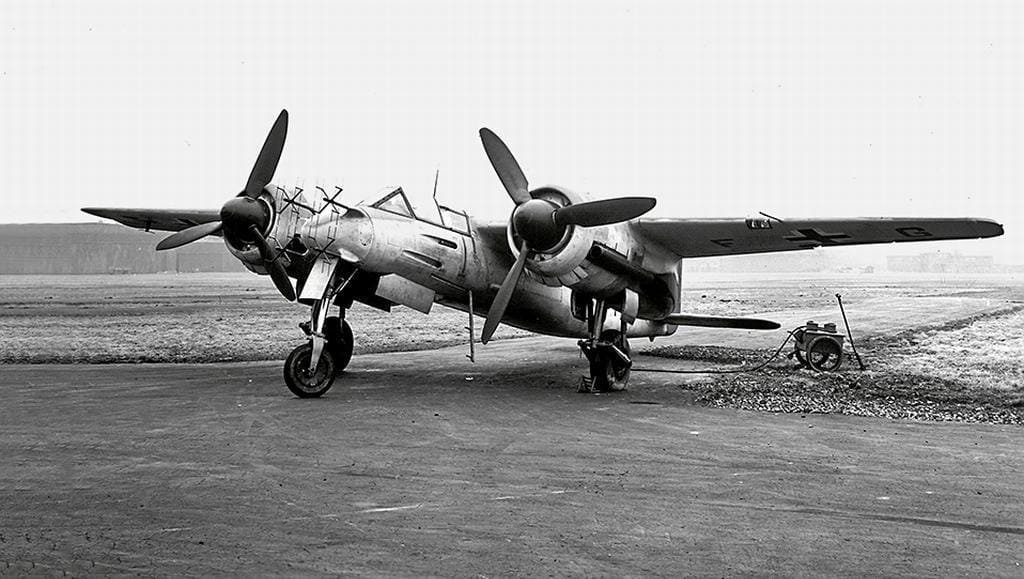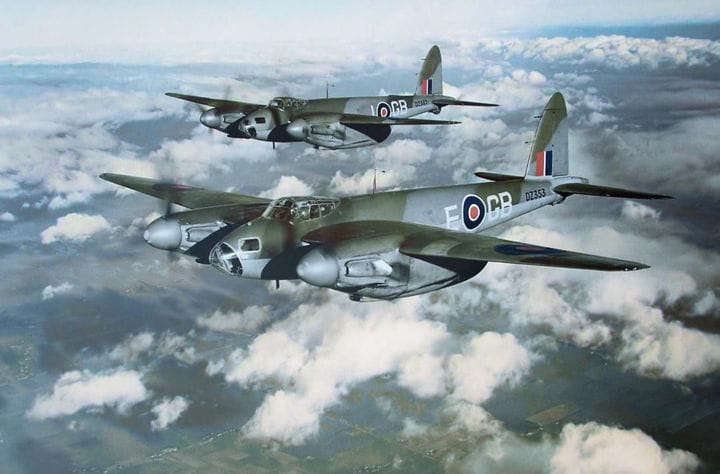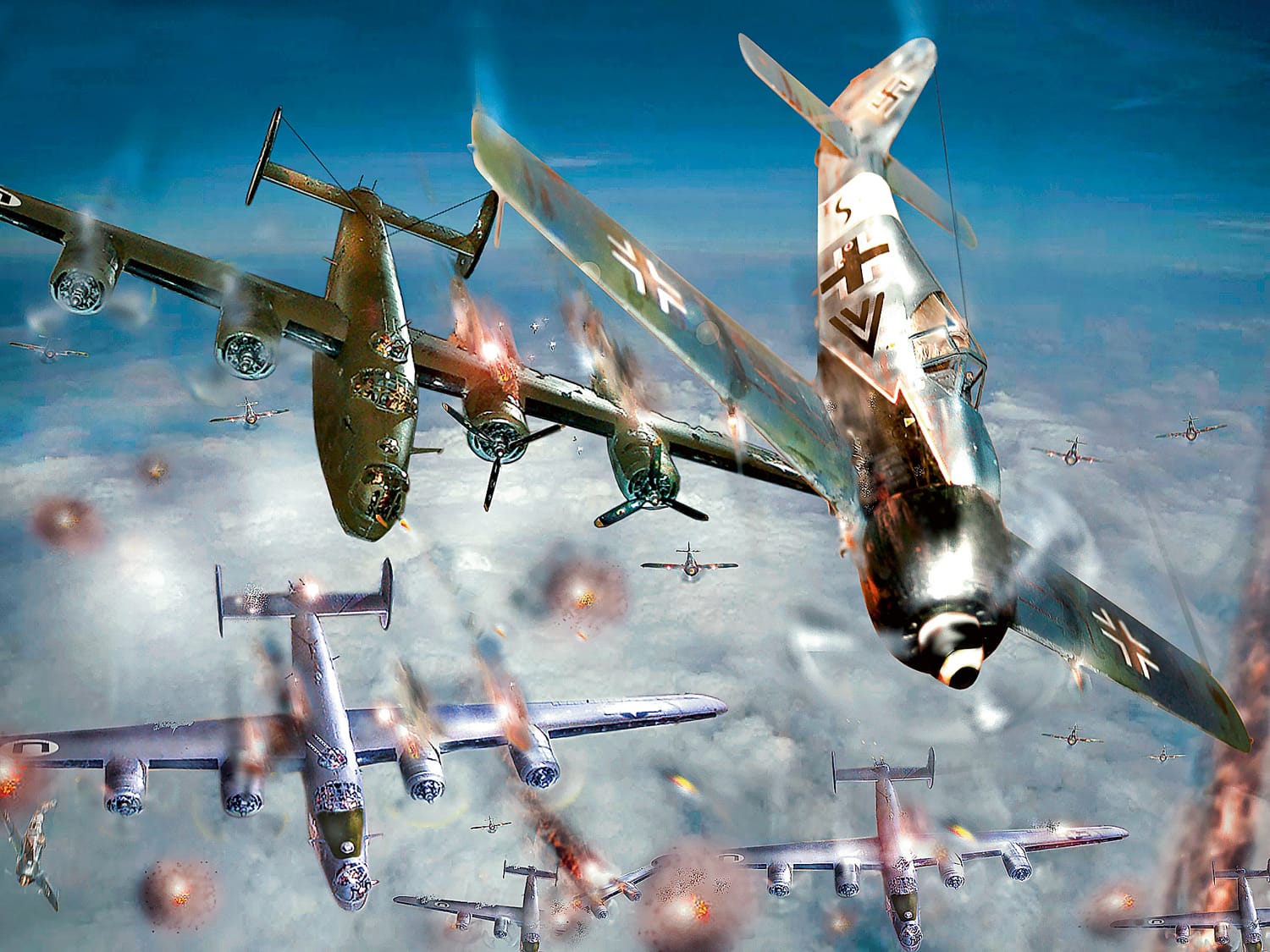The deadly wooden gnat
The vision of the fast bomber without defence armament
The idea of the in-house de Havilland team was to construct a fast bomber which would be able to get by without any defensive armament. The initial reaction from the British authorities was one of downright scepticism. How could it be possible to build an aircraft capable of such speed that it could escape from a fighter, when with the added weight of the bombs it was bound to be clearly inferior to any fighter, simply taking into account in principle the purpose for which it was designed. Therefore, much more powerful engines than those of the fighters would be required, but any prospects of that happening were illusory. In the technological war currently being waged by both sides to produce superior fighter aircraft to those of the enemy, as a matter of principle the best and most powerful engines available were being installed in both sides’ fighter aircraft. However, only if the bomber were faster than his attacker, would it be possible for an aircraft carrying bombs to dispense with its own defensive armament.
The “step backwards” to wood: the Mosquito takes off

The response from de Havilland appeared to be a retrograde step to the design technology of the old biplanes of the first World War. The nature of the throwback was in its use of a light, sturdy material: wood.
The maiden flight of the Mosquito, whose frame apart from the engine area and a few of the control surfaces was constructed entirely of wood, had already taken place on 25th November 1940. Nobody outside of the development team had considered it a possibility that a twin-engined aircraft which still had double the weight of a single-engined Spitfire, would be able to fly some 20 miles faster than it. Nevertheless, the Mosquito was more than a match for any fighter, since the ratio of the thrust of the two Rolls-Royce Merlin engines to the stream-lined, lightweight wooden fuselage was simply unbeatable.
The Germans had also adopted the idea of a fast bomber with the Junkers Ju 88 S, although in this case it was a metal construction. What was in itself a very promising design, was ruined by the insistance of the German Ministry of Aviation on the installation of extra MG defensive positions—and therefore on an additional fourth crew member—as well as decreeing that it should have dive qualities. Nevertheless, the result was an extremely successful all-round German bomber. After the convincing display on its maiden flight, de Havilland had no need to get involved in those kind of compromises, since that first flight convinced everyone, including the sceptics at British HQ.
Failure of the German answer: Ta 154 “Moskito”

A German design similar to the British Mosquito, one drawn up by the Luftwaffe as an answer to it, and likewise predominately constructed from wood, the Ta 154,—significantly it was named the “Moskito“—was a failure. A British air attack on Wuppertal destroyed a “Tego film“ wood adhesive manufacturing plant, which was used to hold the wooden frame together. Afterwards they resorted to wood glue—with catastrophic consequences. The second prototype of the Ta 154 A-1 crashed in June 1944 when a wing literally disintegrated.Production was discontinued on 14th August 1944.
The British Mosquito reconnaissance aircraft, especially, unencumbered by the weight of bombs and equipped with only cameras, had been flying around German airspace since the middle of 1943 so brazenly and with such impunity, that the pilots in the German fighters began to develop an inferiority complex, whenever they attempted to intercept one of these particularly fast recce aircraft at high altitude. Provided he recognised the danger, the British pilot would simply apply full power. The dot on the horizon would slowly decrease in size for the frustrated German pilot. At medium or low altitudes, however, it was a somewhat different story, particularly against the strafing or bombing variants, which although still fast, could not surpass the speed of a fighter. In 1943, though, the German pilots could not yet know that the glory days for the crews of the high-flying reconnaissance Mosquitos were also numbered. The German Messerschmitt Me 262 jet—Germany’s last trump card in the sky—would by the end of 1944 soon give it short shrift. In military terms it may scarcely have made more than a ripple, but psychologically, for the remaining and still desperately fighting German pilots, it represented a triumph of immeasurable value. The reported downing of a Mosquito reconnaissance aircraft was the cause for a deep sense of satisfaction.






Ebenfalls interessant…

The final kill of the ace of aces, Erich Hartmann, the most successful fighter pilot of all time
Dangerous encounter in the airIn March 1945 a Russian bombing attack on Prague was reported. Hartmann took off with four Me 109s. A Russian formation…
Weiterlesen
Sturmjäger – cuirassiers of the air
Air battle over Germany: the attack on hydrogenation plants and aircraft factoriesIn the early hours of the morning of 7th July 1944 756 B-17 Flying…
Weiterlesen
That’s how historic air battles get botched by Hollywood
Time and again the ignorance and nonchalance with which even highly renowned directors simply ignore historic details is fascinating. They do this in spite of…
Weiterlesen